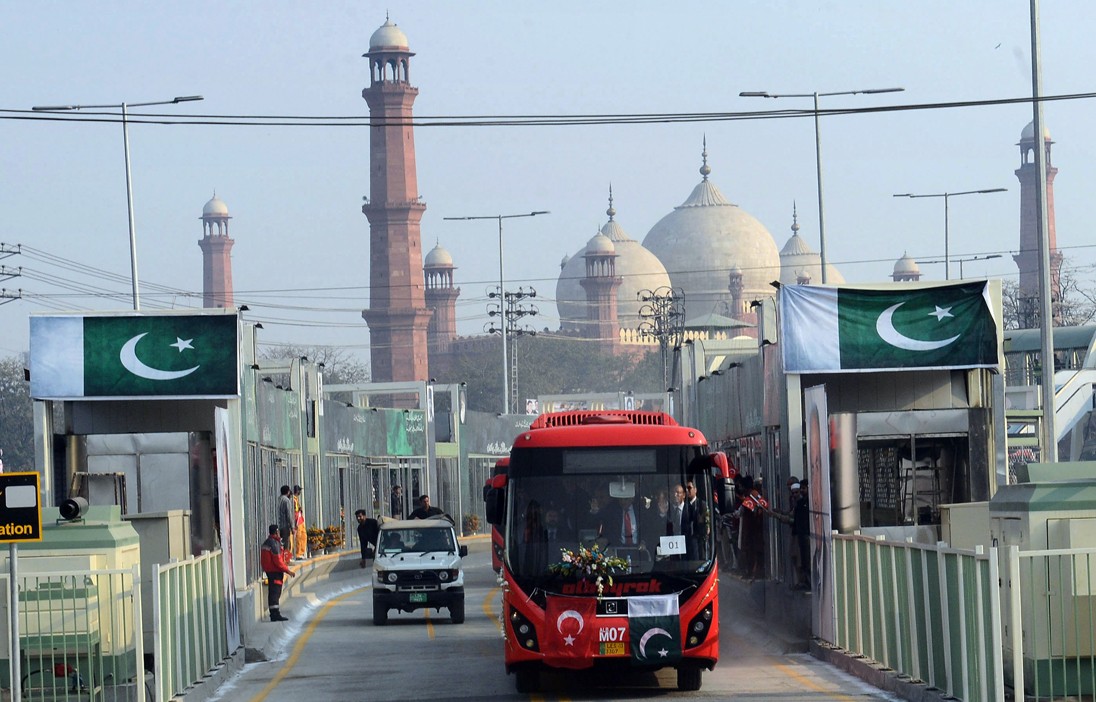
Realising there are gaps in the Metro Bus Transit System, the government has announced affording it 14-odd feeder routes. But, wait, there might still be delays

In its second year of operation, the Punjab Government’s most prized Metro Bus Service (MBS) is still lacking in many aspects, causing most commuters in need of an easy and inexpensive mode of transportation to fret and fume. Where the proverbial haste caused the waste, the architects of the MBS forgot to link the mega commuting infrastructure with the inevitable feeder roads that would collect commuters from all corners of the city.
Obviously cognisant of the glaring blunder, the government has now announced setting up 14-odd feeder routes on the 29 bus stations of Metro, along the 27-kilometre long stretch that connects Shahdara to Gajumata.
It is a pity that the belated project shall not be complete before March 2016 whereas earlier it was said, in the 7th meeting of the Punjab Mass Transit Authority (PMTA), that it should become operational in December this year. Bureaucratic hiccups, financial lacunas and poor technical management are the real reasons behind the delay.
Insiders reveal that the project has become a pain in the neck for the government. Land acquisition, dedicating lanes for feeder routes and fare issues are some of the most dreaded problems it faces.
If everything goes well according to the plan, the said 14 feeder routes shall cover a distance of 123 kilometres. Around 200 buses shall run on a number of routes -- from Lahore Railway Station to Data Darbar, Chowk Yateem Khana to Data Darbar, Railway Station to Shahdara Metro Bus Station, Chungi Amarsidhu to RA Bazaar, Ring Road to Bhatti Chowk, Babu Sabu Interchange to Sandha, Baggria to Chungi Amarsidhu, Wafaqi Colony to Canal Station, Sham nager to Railway Station, Chungi to Qartaba Station, Babu Sabu Interchange to Main Market, RA Bazar to Secretariat, Baggria to Kalma Chowk, RA Bazar to Chungi Amarsidhu via Ghazi and Bedian roads.
The process of preparing tenders has kicked off for integrated bus operations. The buses are said to have the capacity of 40-80 passengers each. These shall run on dedicated lanes and there will be no fences on either side.
The company to be awarded the contract shall be liable to fines in case the bus air-conditioning fails or its onboard camera stops working; also in the event of damaged seats, missing information and so on.
A senior Punjab government official tells TNS that the PMTA intends to regulate all buses on the feeder routes and shall pay Rs180 per kilometre to each bus so that it can balance its operational costs.
The PMTA General Manager Ayaz Shah declares awarding of contract to Daewoo company, rubbishing the rumour that the bidding process is still underway and no company has been finalised or even shortlisted so far.
Shah also says that the bus fare shall be charged through a specially issued Metro Bus Smart Card which could then be utilised for multiple journeys. The minimum fare on all feeder routes shall be Rs5.
The PMTA GM vows to replicate the feeder route operation in Multan and Rawalpindi also.
On the other hand, urban transport expert Khalid Tanveer points out a number of flaws in the feeder routes project. "How can the government possibly ensure dedicated lanes [for metro feeder routes] without creating massive traffic snarl-ups?" he asks.
"The unfenced metro bus track is already a victim of a number of violations. The government shall have to strictly enforce law if it means to make a success of the project."
The Metro Bus Service and now the inclusion of feeder routes are under fire, especially since the Finance Department diverted most funds towards this and many other, similar transport infrastructure development projects, without showing care for release of funds for other public projects.
In the budget of the fiscal year 2015-16, the provincial government announced it had earmarked amounts of funds for health, education, livestock, and housing. It also spoke of upgrading the Lahore Central Sewerage System at an estimated cost of Rs7 billion, and redoing the city graveyards for Rs1 billion. However, as it turns out, the funds are mostly being pumped into the myriad transport projects.
Ever since its launch, the MBS has fallen short of its operational capacity. Its average daily rider-ship was believed to be between 172,000 to 230,000. In the absence of the feeder routes, the number of commuters has come down to 124,800-156,900.
The government hopes that once the 14 feeder routes become fully active, Metro Bus’s yearly rider-ship shall peak to 80 million.
Meanwhile, the authority of PMTA, which is struggling to set up the said routes, is also being questioned following a writ petition that challenged the Mass Transit Ordinance 2015 in the court. Petitioner Feroze Shah Gillani has pleaded that the Ordinance willfully overstepped the territory of the local governments. It should be declared null and void, he has demanded. The court has summoned representatives of federal and provincial government to submit their reply within the next two weeks’ time.
This story was published in The News on Sunday on October 4, 2015 with the title Feeding the gaps.